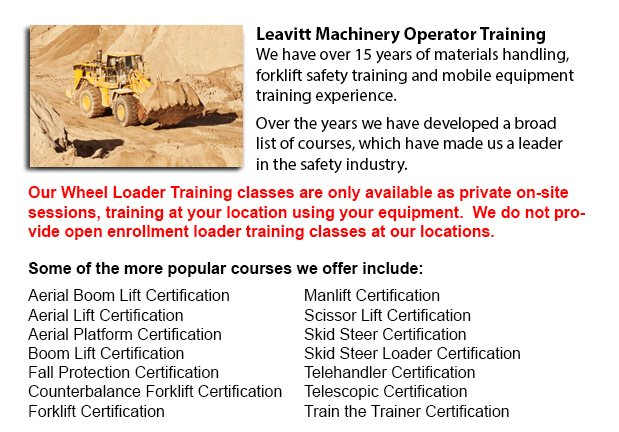
Lift trucks are accessible in several various units which have varying load capacities. Nearly all standard forklifts used in warehouse settings have load capacities of one to five tons. Larger scale units are utilized for heavier loads, like loading shipping containers, may have up to 50 tons lift capacity.
The operator could use a control so as to lower and raise the forks, that are also known as "tines or forks." The operator can even tilt the mast so as to compensate for a heavy load's tendency to angle the tines downward to the ground. Tilt provides an ability to operate on rough surface too. There are annual contests meant for skillful lift truck operators to compete in timed challenges as well as obstacle courses at local forklift rodeo events.
General use
Lift trucks are safety rated for cargo at a specific maximum weight as well as a specific forward center of gravity. This very important information is provided by the manufacturer and placed on a nameplate. It is vital cargo do not go over these specifications. It is unlawful in a lot of jurisdictions to tamper with or remove the nameplate without getting consent from the forklift maker.
Most forklifts have rear-wheel steering in order to improve maneuverability inside tight cornering conditions and confined areas. This particular kind of steering differs from a drivers' initial experience with other vehicles. Since there is no caster action while steering, it is no needed to use steering force to be able to maintain a constant rate of turn.
Another unique characteristic common with lift truck utilization is unsteadiness. A continuous change in center of gravity happens between the load and the forklift and they have to be considered a unit during use. A lift truck with a raised load has gravitational and centrifugal forces that can converge to cause a disastrous tipping mishap. So as to prevent this from happening, a forklift must never negotiate a turn at speed with its load raised.
Lift trucks are carefully built with a particular load limit utilized for the blades with the limit decreasing with undercutting of the load. This means that the load does not butt against the fork "L" and will lower with the rise of the tine. Usually, a loading plate to consult for loading reference is positioned on the forklift. It is unsafe to utilize a forklift as a worker hoist without first fitting it with certain safety devices like for instance a "cherry picker" or "cage."
Lift truck utilize in warehouse and distribution centers
Forklifts are an important part of warehouses and distribution centers. It is significant that the work surroundings they are placed in is designed in order to accommodate their efficient and safe movement. With Drive-In/Drive-Thru Racking, a forklift needs to travel inside a storage bay that is many pallet positions deep to put down or take a pallet. Operators are often guided into the bay through rails on the floor and the pallet is positioned on cantilevered arms or rails. These confined manoeuvres require well-trained operators to be able to carry out the job safely and efficiently. In view of the fact that each pallet requires the truck to go into the storage structure, damage done here is more frequent than with various kinds of storage. If designing a drive-in system, considering the size of the fork truck, along with overall width and mast width, have to be well thought out in order to make certain all aspects of an effective and safe storage facility.
-
Guelph Warehouse Forklift Training Classes
Guelph Warehouse Forklift Training Classes - Warehouse training classes exist for the reason of raising awareness regarding common warehouse hazards. Students learn the important safety procedures that are necessary to warehouse safety. An emphasis i... More -
Guelph Forklift Operator Certification
Guelph Forklift Operator Certification - Certification for forklifts are needed to guarantee the safe use of forklifts for those employers in construction, industrial and warehouse settings. The training has to involve a method of education plus some... More -
Guelph Crane Training School
Guelph Crane Training School - The crane training school offers industry-relevant programs. Courses provide trainees with learning results that match current industry demands. Our small class sizes combine hands-on experience and theory. Our qualifie... More -
Guelph Heavy Equipment Training Programs
Guelph Heavy Equipment Training Programs - At whatever given construction site, there are usually various kinds of machines that are ready to be used. These heavy and light equipment need both operators to run them and mechanics to fix them. Apprenti... More -
Guelph Skid Steer Ticket
Guelph Skid Steer Ticket - On a skid-steer loader, the lift arms are at the side of the driver together with pivot points at the back of the driver's shoulders. This makes them different compared to a traditional front loader. Because of the operator... More -
Guelph Zoom Boom Ticket
Guelph Zoom Boom Ticket - Zoom Boom Training focuses on correctly training prospective operators on variable reach forklifts. The training goals include gaining the understanding of the equipments physics and to define the tasks of the operator. This... More -
Guelph Heavy Equipment Training
Guelph Heavy Equipment Training - Commonly, the different types of heavy equipment training are divided into 2 categories of machinery: those that have rubber tires and tracked vehicles. Tracked vehicles consist of items like for instance bulldozers,... More -
Guelph Aerial Lift Safety Training
Guelph Aerial Lift Safety Training - Each year, there are roughly 26 construction deaths due to the use of aerial lifts. Nearly all of the craftsmen killed are laborers, electrical workers, carpenters, painters or ironworkers. Nearly all deaths are c... More

Forklift Certification Guelph
TOLL FREE: 1-888-254-6157
Guelph, Ontario
forkliftcertificationguelph.com
Email Us
About Us


